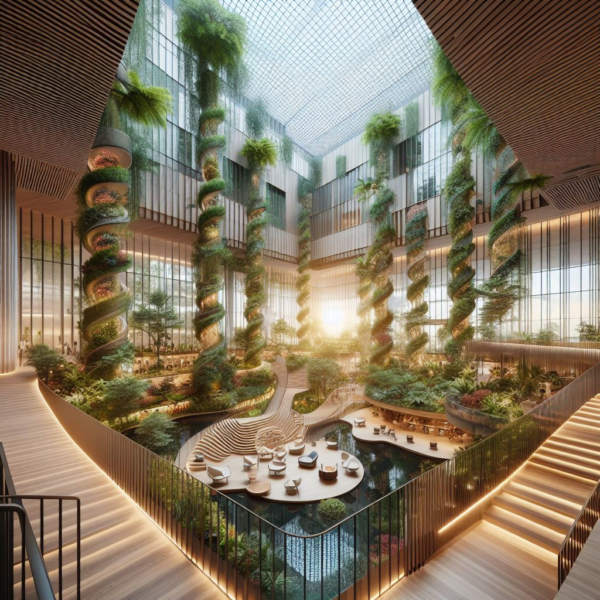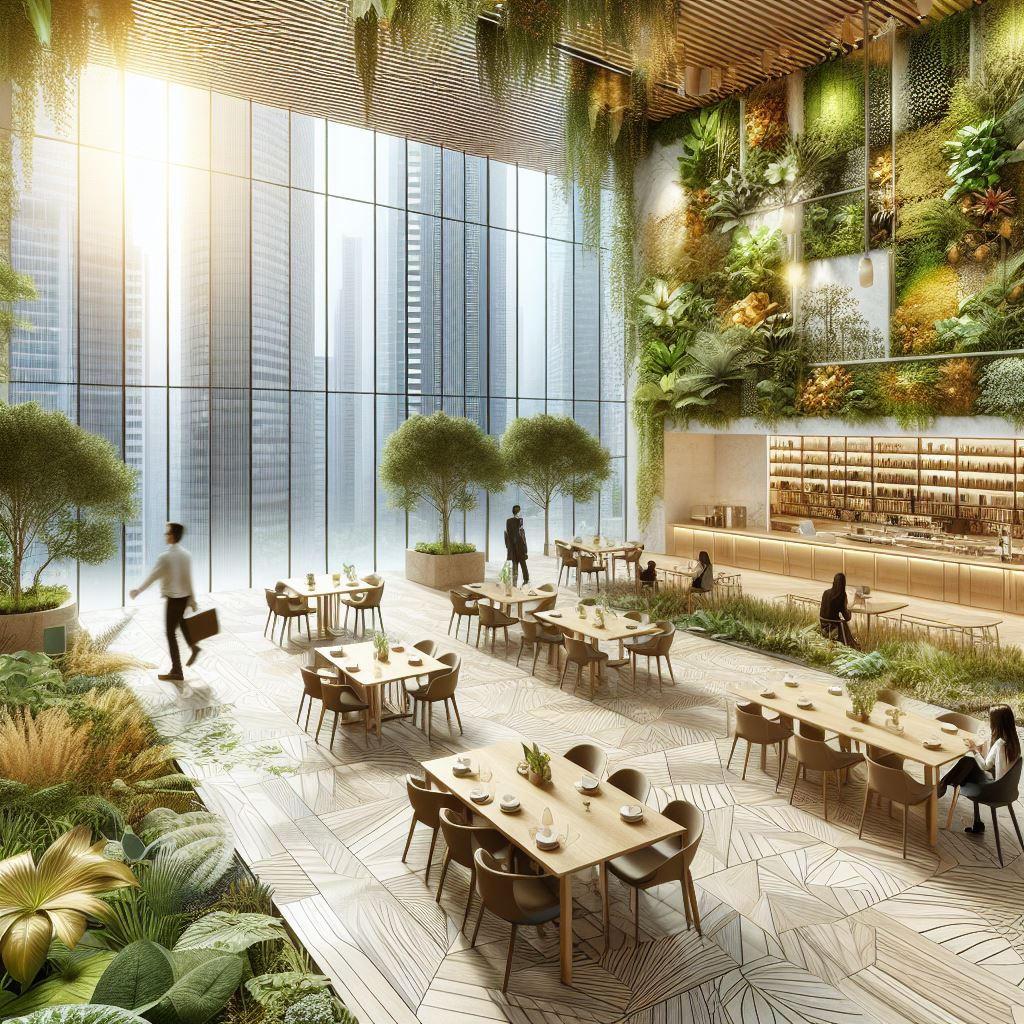The Rising Trend of Nature into Commercial Spaces by Biophilic Design
In today’s fast-paced world, where the lines between work and life blur, creating environments that foster well-being and productivity is crucial. One design trend that has been gaining significant traction in the commercial sector is biophilic design. Biophilic design principles focus on integrating natural elements and patterns into built environments to reconnect people with nature. From bustling corporate offices to serene hospital settings, the incorporation of biophilic design has shown remarkable benefits for occupants.
Understanding Biophilic Design:
Biophilic design is rooted in the idea that humans have an innate connection to nature. In commercial interior design, this concept translates into creating spaces that mimic natural environments, thereby promoting a sense of harmony and well-being among occupants. Commercial interior designers are increasingly embracing biophilic design principles to create environments that not only look visually appealing but also contribute to the overall health and productivity of those who inhabit them.
Bringing Nature Indoors: Biophilic design seeks to blur the boundaries between indoor and outdoor spaces by incorporating natural elements such as plants, water features, and natural materials like wood and stone into interior design. In commercial settings like offices and retail spaces, incorporating greenery not only adds aesthetic appeal but also improves air quality and reduces stress levels among occupants.
Enhancing Well-being: Numerous studies have shown the positive impact of biophilic design on occupant well-being. Exposure to natural elements has been linked to reduced stress, improved mood, and increased creativity. By incorporating elements like natural light and views of green spaces into commercial environments, businesses can create healthier and more enjoyable spaces for their employees and customers alike.
Boosting Productivity: One of the most significant benefits of biophilic design is its ability to enhance productivity. Research has found that employees working in environments with natural elements are more productive, focused, and engaged. Incorporating biophilic design elements such as green walls or indoor gardens into office spaces can help reduce distractions, improve concentration, and foster a sense of connection with the environment.

Creating Positive Impressions: For businesses, the design of their commercial spaces can make a lasting impression on clients, customers, and visitors. Biophilic design not only creates visually stunning environments but also conveys a sense of sustainability and environmental consciousness. Showrooms, clinics, and other commercial spaces that incorporate biophilic design elements can leave a positive impression on visitors and enhance brand reputation.
Adaptable to Various Settings: Biophilic design principles are highly adaptable and can be applied to a wide range of commercial settings. Whether it’s designing a modern office space, a welcoming retail environment, or a calming healthcare facility, biophilic design offers endless possibilities for creating spaces that promote well-being and productivity.
The Benefits of Biophilic Design:
The adoption of biophilic design in commercial spaces offers a multitude of benefits. Research has shown that exposure to natural elements such as plants, natural light, and water features can reduce stress, improve mood, and enhance cognitive function. For businesses, this means happier, more productive employees and more satisfied customers. Commercial interior designers play a crucial role in harnessing these benefits by strategically incorporating biophilic elements into their designs.
Incorporating Nature’s Elements:
Commercial interior designers have a wide array of natural elements at their disposal when implementing biophilic design principles. From lush indoor greenery to cascading water features, incorporating nature into commercial spaces can create a serene and inviting atmosphere. Additionally, using natural materials such as wood, stone, and bamboo in furnishings and finishes adds warmth and authenticity to the space. By seamlessly integrating these elements, commercial interior designers can transform mundane spaces into vibrant oases that promote well-being and productivity.
Biophilic Patterns and Geometry:
In addition to incorporating natural elements, biophilic design also emphasizes the use of patterns and geometry found in nature. Organic shapes, fractal patterns, and biomimicry are all elements commonly seen in biophilic design. By mimicking the complexity and beauty of nature’s patterns, commercial interior designers can create visually captivating environments that resonate with occupants on a subconscious level. These patterns not only enhance the aesthetic appeal of the space but also contribute to a sense of tranquility and connection to the natural world.
The Future of Biophilic Design:
As businesses increasingly prioritize employee well-being and sustainability, the demand for biophilic design in commercial spaces is expected to continue growing. Commercial interior designers will play a pivotal role in shaping the future of biophilic design by pushing the boundaries of creativity and innovation. From innovative use of materials to the integration of technology, the possibilities for biophilic design in commercial interiors are endless. By embracing biophilic principles, businesses can create environments that not only reflect their values but also nurture the health and productivity of their occupants.
In conclusion, biophilic design represents a paradigm shift in commercial interior design, placing a renewed emphasis on our connection to nature. By incorporating natural elements, patterns, and geometry into commercial spaces, designers can create environments that foster well-being, productivity, and sustainability. As the demand for biophilic design continues to rise, commercial interior designers will play a vital role in shaping the future of our built environment, creating spaces that not only look beautiful but also contribute to a healthier, more harmonious world.


